Step Back in Time: Discovering Xinyang’s Ming and Qing Dynasty Heritage
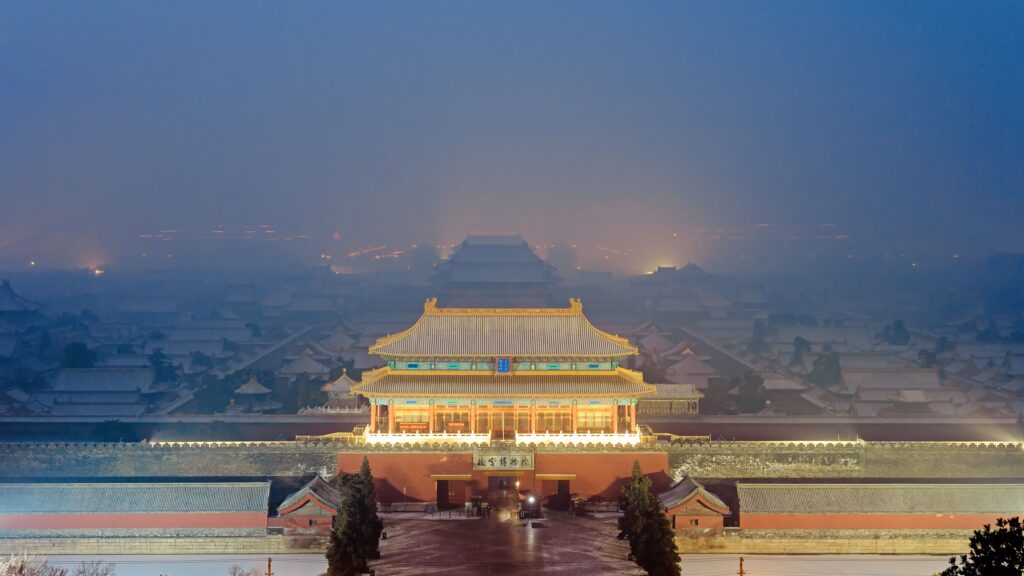
An Essential Guide to Visiting Ming And Qing Dynasty Architecture In Xinyang
In This Guide
- An Essential Guide to Visiting Ming And Qing Dynasty Architecture In Xinyang
- The Rich History and Legends of Ming And Qing Dynasty Architecture In Xinyang
- Main Highlights: What You Absolutely Can’t Miss
- Planning Your Visit: A Practical Guide
- Tickets: Prices, Booking, and Tips
- How to Get There: A Complete Transportation Guide
- Local Cuisine and Accommodation Nearby
- Frequently Asked Questions
- Final Thoughts on Your Trip
Discover the Architectural Treasures of Xinyang
Nestled in the heart of Henan Province, Xinyang is a captivating destination that invites travelers to step back in time and explore the rich architectural heritage of the Ming and Qing dynasties. This historical city is not just a feast for the eyes; it is a corridor through which the stories of ancient China come alive, reflected in its magnificent structures that have withstood the test of time.
As you wander through Xinyang’s streets, you’ll find yourself surrounded by imposing ancient city walls, elegant temples, and intricately designed pavilions. Each building tells a tale of the era’s artistry and craftsmanship, showcasing the unique styles that defined these dynasties. The architecture here serves as a canvas for the cultural and social dynamics that thrived during the Ming (1368-1644) and Qing (1644-1912) periods.
Why Visit Xinyang?

Ming And Qing Dynasty Architecture In Xinyang.
- Historical Significance: Xinyang was a key military and economic hub during the Ming and Qing dynasties. The architectural remnants provide insight into the region’s past and its role in shaping Chinese history.
- Cultural Richness: The city is home to several temples and historical sites, offering a glimpse into the spiritual life and traditions of the time.
- Natural Beauty: Set against the backdrop of lush landscapes, Xinyang’s architectural wonders are complemented by the serene beauty of its surrounding nature, making it a perfect spot for both history enthusiasts and nature lovers.
Whether you’re scaling the ancient walls, marveling at the intricate woodwork of a traditional pavilion, or engaging with locals who share tales of their heritage, Xinyang promises an enriching experience. Prepare to immerse yourself in a world where history and culture intertwine, creating a tapestry of experiences that will leave you in awe.
The Rich History and Legends of Ming And Qing Dynasty Architecture In Xinyang
A Journey Through Time: Discovering the Architectural Marvels of Xinyang
Xinyang, nestled in the southern part of Henan province, is a treasure trove of architectural splendor from the Ming (1368-1644) and Qing (1644-1912) dynasties. This region not only showcases the aesthetic brilliance of these historical periods but is also steeped in rich legends and stories that breathe life into its ancient buildings.
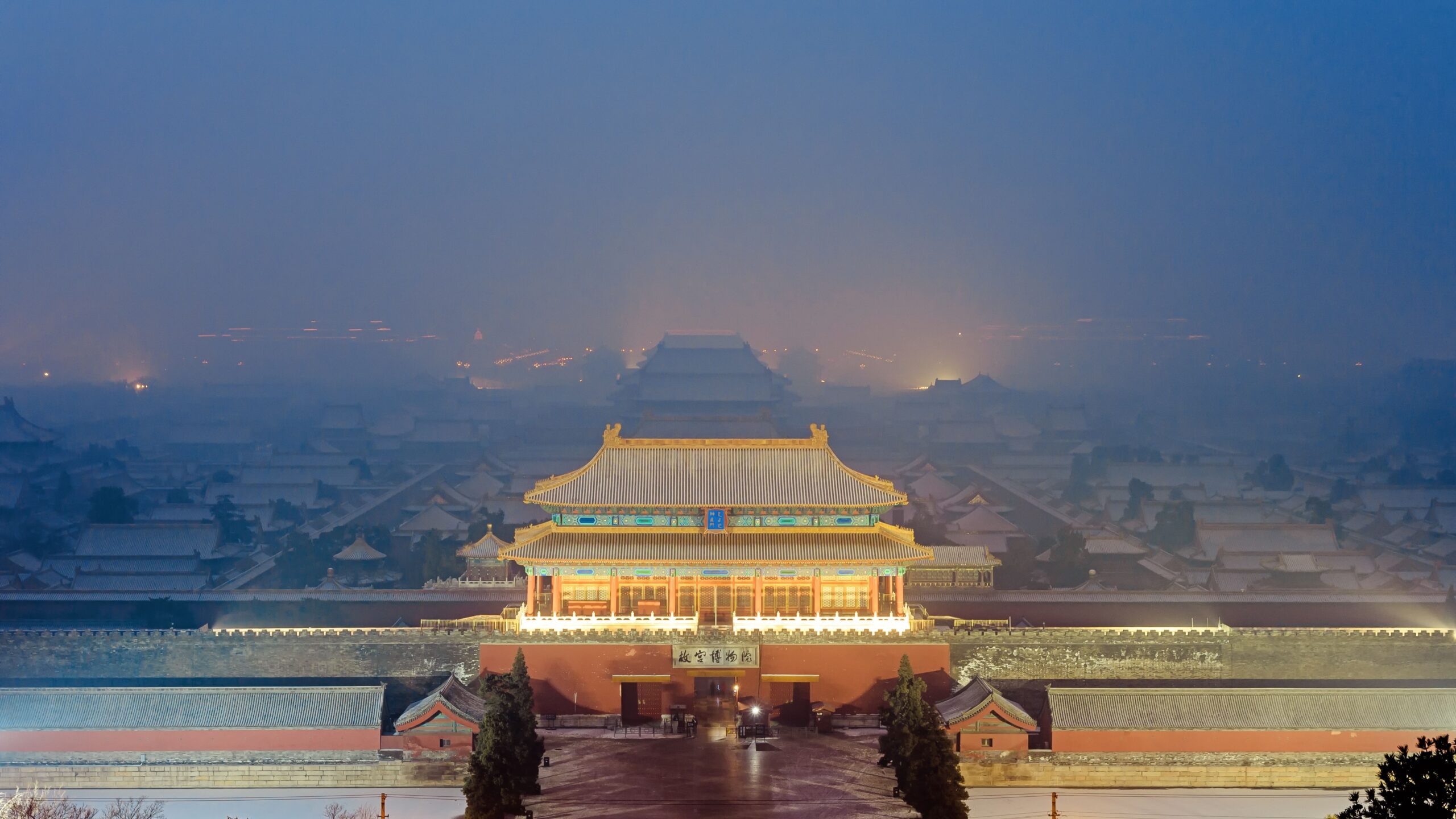
Ming And Qing Dynasty Architecture In Xinyang.
The Architectural Style
The architecture of Xinyang during the Ming and Qing dynasties is characterized by its intricate woodwork, elegant roof designs, and harmonious integration with nature. Key features include:
- Brilliantly carved wooden beams: Often adorned with motifs of dragons, phoenixes, and other auspicious symbols, these details reflect the artistic mastery of the craftsmen of the time.
- Symmetrical layouts: Buildings were designed with balance and harmony in mind, often centered around courtyards that served as communal spaces.
- Use of local materials: The structures utilized locally sourced stone and timber, which not only enhanced their durability but also allowed them to blend seamlessly into the surrounding landscapes.
Historical Significance
Xinyang’s buildings served not just as residences or temples, but as vital centers of culture and society. Many ancient structures, like the Xinyang Confucius Temple, were educational hubs where scholars gathered to study Confucian texts and engage in philosophical discussions, shaping the intellectual landscape of the region.
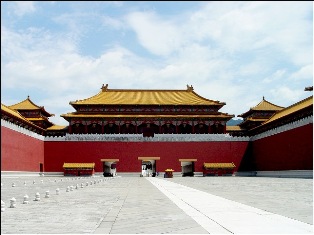
Ming And Qing Dynasty Architecture In Xinyang.
The Guangming Pavilion, another architectural gem, stands as a testament to the Ming dynasty’s commitment to education and governance. Legend has it that this pavilion was a favorite retreat for scholars who sought inspiration from its serene surroundings, leading to the creation of many famous works of literature.
Legends and Folklore
The architecture of Xinyang is intertwined with captivating legends that enrich the visitor experience. One of the most renowned tales is that of the Dragon King of Xinyang, who is said to have lived in the nearby mountains. According to local folklore, the Dragon King would bless the town with rain during droughts, and in gratitude, the residents built stunning pavilions in his honor. Today, many visitors are drawn to these sites, hoping to catch a glimpse of the mystical dragon.
Another fascinating story revolves around the “Three Sisters of Xinyang,” who were known for their unmatched beauty and intelligence. They were said to have inspired the architectural designs of several local temples, with their features immortalized in the intricate carvings that adorn the buildings. This legend continues to captivate the hearts of locals and travelers alike, adding a romantic allure to the architectural landscape.
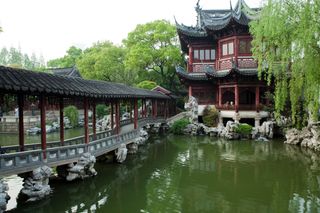
Ming And Qing Dynasty Architecture In Xinyang.
Preservation Efforts
Despite the passage of time, many of Xinyang’s Ming and Qing dynasty structures have endured, thanks to ongoing preservation efforts. Local authorities and cultural organizations are actively working to maintain these historical sites, ensuring that future generations can appreciate their beauty and historical significance.
As you wander through the streets of Xinyang, the blend of history, legend, and architectural wonder invites you to not just observe, but to feel the echoes of the past. Each building tells a story, and each corner you turn uncovers a new layer of this enchanting city’s rich history.
Conclusion
Exploring the Ming and Qing dynasty architecture in Xinyang is more than just a visual experience; it is a journey through time where stories of legends and the brilliance of ancient craftsmanship come alive. Whether you are an architecture enthusiast, a history buff, or a curious traveler, Xinyang offers an unforgettable glimpse into China’s illustrious past.
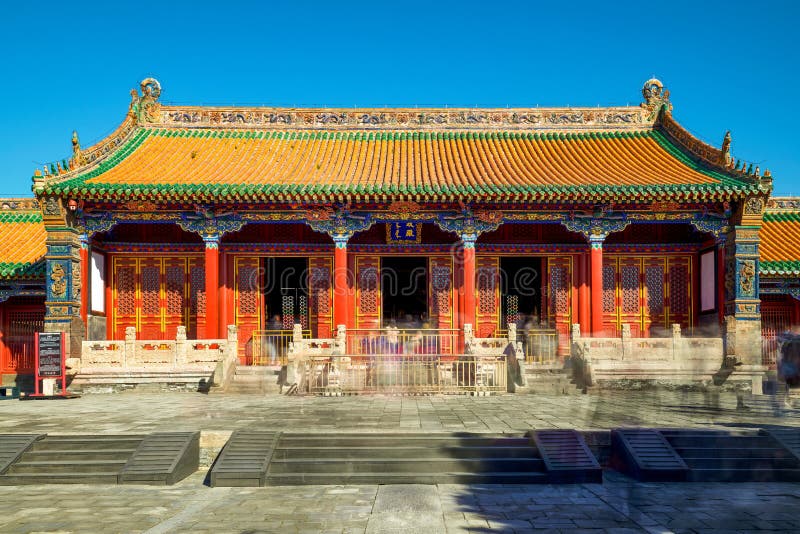
Ming And Qing Dynasty Architecture In Xinyang.
Main Highlights: What You Absolutely Can’t Miss
When exploring the rich tapestry of Ming and Qing dynasty architecture in Xinyang, visitors are treated to a fascinating glimpse into China’s imperial past. This guide will lead you through the essential highlights that you absolutely cannot miss, ensuring your journey is both enlightening and memorable.
1. Ancient City Walls
One of the most striking features of Xinyang is its ancient city walls, remnants of the city’s former glory. Strolling along these walls, you can appreciate the grandeur of the past while taking in panoramic views of the surrounding landscape. These structures, though weathered, convey an impressive narrative of resilience and history.
2. Guide Confucius Temple (岳阳孔庙)
A visit to the Guide Confucius Temple is a must. This sacred site, dedicated to the great philosopher Confucius, boasts intricate wooden carvings and traditional architecture that reflect the values of education and morality central to Confucianism. The serene atmosphere of the temple complex invites quiet contemplation, making it an ideal spot for both reflection and learning.
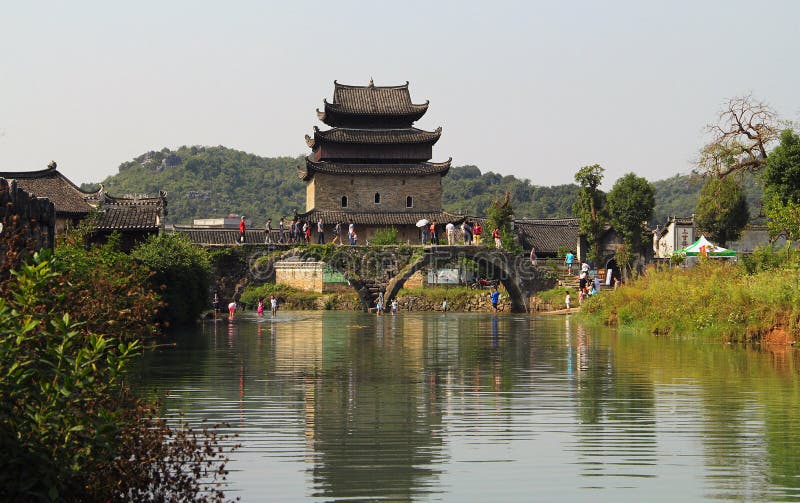
Ming And Qing Dynasty Architecture In Xinyang.
3. Yuhuang Pavilion (玉皇阁)
Perched on a hill, Yuhuang Pavilion offers not only architectural beauty but also breathtaking views of the Yellow River. This pavilion, designed in the classic style of the Ming and Qing dynasties, serves as an excellent example of how these architectural traditions harmonize with nature. It is a perfect spot for photography enthusiasts or anyone seeking a moment of tranquility.
4. The Ruins of Historic Buildings
Wander through the streets and alleys to discover ancient buildings in various stages of disrepair. These structures tell stories of a bygone era and offer an authentic experience of Xinyang’s rich history. Some buildings may be crumbling, yet their charm lies in their authenticity, providing a true sense of the historical narrative of the region.
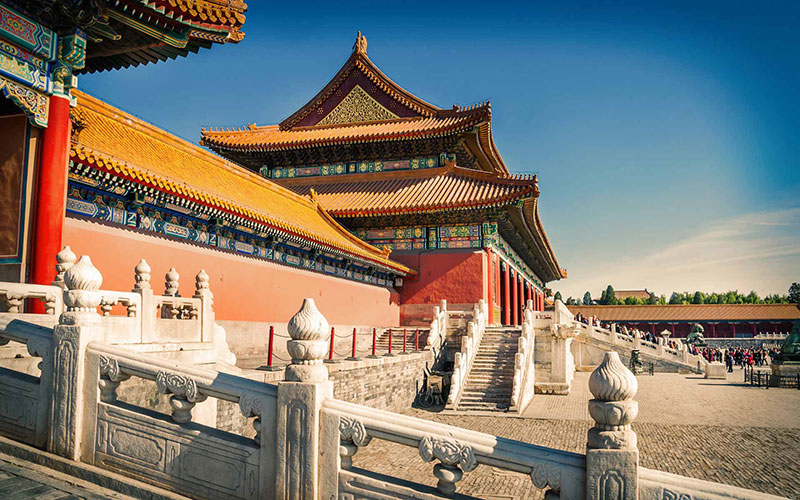
Ming And Qing Dynasty Architecture In Xinyang.
5. The Scenic Yellow River
After exploring the architecture, take a leisurely walk to the nearby Yellow River. The river’s picturesque banks provide a stunning backdrop for relaxation and reflection. This area is not only beautiful but also historically significant, as it has been a lifeline for many civilizations throughout Chinese history.
6. Local Cultural Experiences
Immerse yourself in local culture by participating in traditional activities or visiting nearby artisan workshops. Whether it’s trying your hand at calligraphy or tasting local delicacies, engaging with the local community will deepen your understanding and appreciation of Xinyang’s cultural heritage.
7. Scenic Bus Ride from Xining
If you’re traveling from Xining to Xinyang, the bus ride itself is a highlight. The route offers stunning vistas of rolling hills and rural landscapes, providing the perfect introduction to the natural beauty of the region before you even arrive at your architectural destinations.
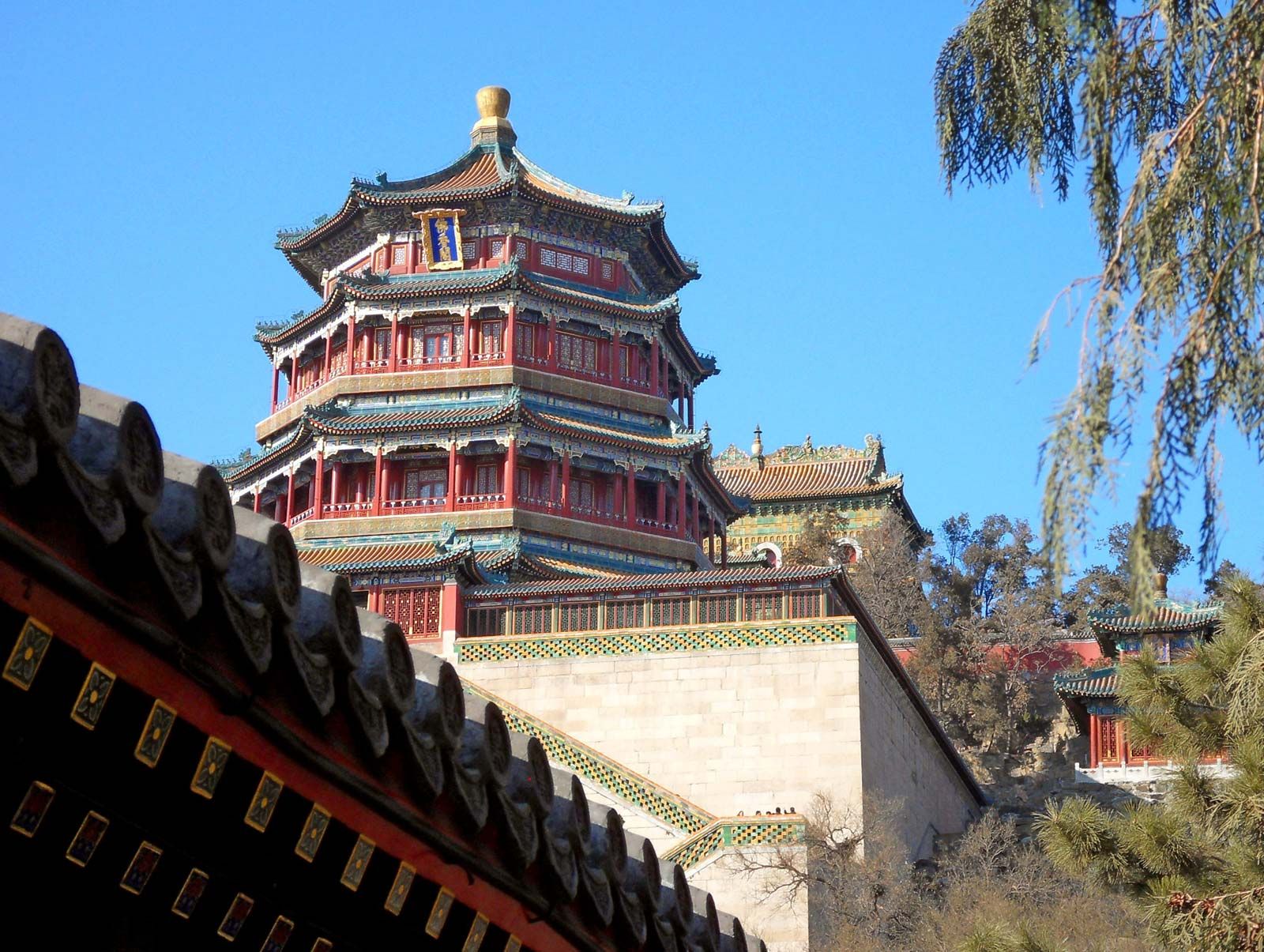
Ming And Qing Dynasty Architecture In Xinyang.
Final Thoughts
Xinyang’s Ming and Qing dynasty architecture is not just a feast for the eyes; it is a portal into the soul of China’s historical narrative. Whether you are an architecture enthusiast, a history buff, or simply seeking inspiration from another era, these highlights offer a comprehensive experience that is sure to enrich your understanding of Chinese culture. Don’t miss the opportunity to explore this captivating city, where every corner holds a piece of history waiting to be discovered.
Planning Your Visit: A Practical Guide
Your Essential Guide to Visiting Xinyang’s Ming and Qing Dynasty Architecture
Xinyang, a city steeped in history, is home to some of the most exquisite examples of Ming and Qing Dynasty architecture in China. Planning your visit to this cultural treasure can enhance your experience, allowing you to fully appreciate the rich history and artistry of these ancient structures. Here’s everything you need to know for a memorable journey through Xinyang’s architectural heritage.
Getting There
By Air:
The nearest major airport is Xinyang Minggang Airport, which connects to several major cities in China. From the airport, you can take a taxi or arrange for a hotel shuttle to reach the city center.
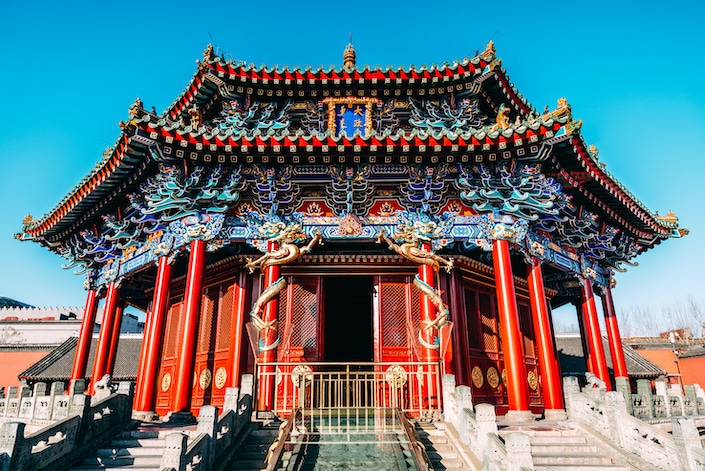
Ming And Qing Dynasty Architecture In Xinyang.
By Train:
Xinyang is well-connected by train to other major cities, including Beijing, Shanghai, and Xi’an. The train station is a convenient point of entry, and taxis are readily available to take you to your destination.
By Bus:
Local buses offer another economical option to explore the city and its surroundings. They are frequent and connect you to various attractions, making it easy to navigate.
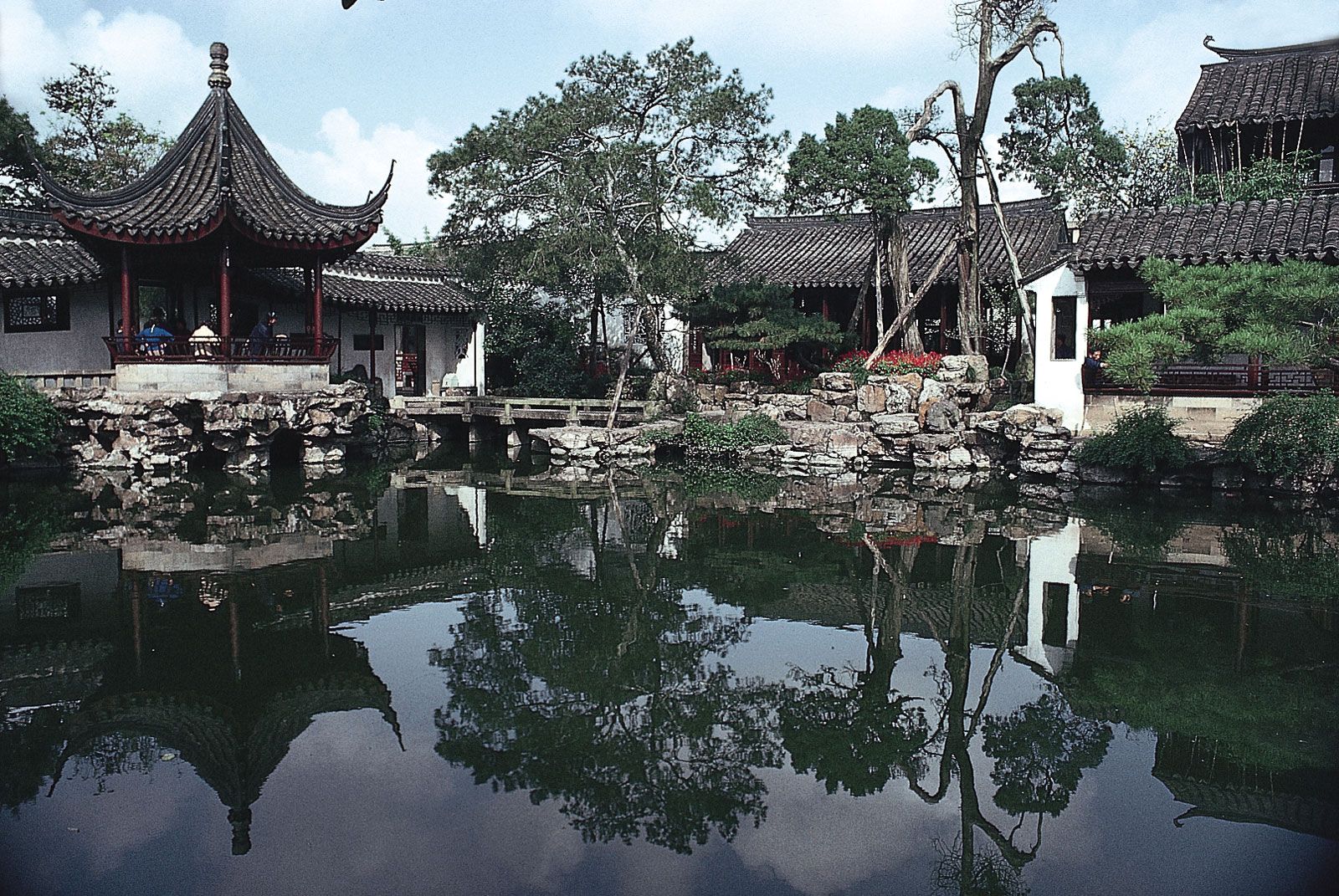
Ming And Qing Dynasty Architecture In Xinyang.
Best Time to Visit
The ideal time to explore Xinyang is during the spring (April to June) and autumn (September to November) months. During these seasons, the weather is mild, which is perfect for walking tours of the ancient sites. Summer can be hot and humid, while winters may bring cold temperatures, making outdoor exploration less enjoyable.
Key Attractions
-
Ming and Qing Dynasties Ancient Buildings:
The main draw for history enthusiasts, these structures are located in Guide County and reflect the architectural styles of their respective periods. The ancient city walls are particularly noteworthy, presenting a stunning backdrop against the landscape. -
Guide Confucius Temple and Yuhuang Pavilion:
Located nearby, these sites are rich in cultural significance and provide further insight into the philosophies and aesthetics of the time. -
Yellow River:
A short walk from the ancient buildings, the Yellow River offers a serene setting to unwind and appreciate the natural beauty of the area.
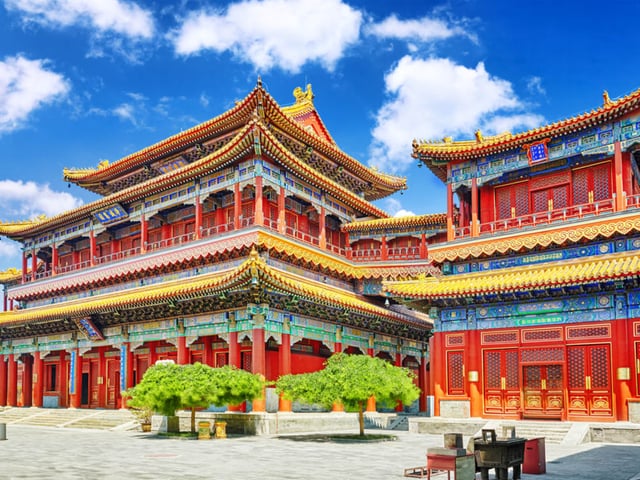
Ming And Qing Dynasty Architecture In Xinyang.
Practical Tips
-
Entrance Fees:
Most historical sites have nominal entrance fees. It’s advisable to carry cash, as not all places accept credit cards. -
Guided Tours:
Consider joining a guided tour for a more in-depth understanding of the history and architecture. Local guides can provide fascinating insights that are often missed when exploring independently. -
Photography:
Xinyang’s architecture is a photographer’s dream. Be sure to bring your camera, but remember to be respectful of the sites and check for any restrictions on photography. -
Clothing:
Wear comfortable shoes and dress in layers, as you may spend long hours walking and temperatures can fluctuate throughout the day.
Local Cuisine
Don’t miss the opportunity to sample local dishes during your visit. Xinyang is known for its variety of regional cuisines, including:
– Xinyang Rice Noodles: A must-try for any visitor.
– Steamed Buns: Often filled with flavorful meats and vegetables.
– Local Tea: Xinyang is famous for its green tea, so indulge in a tasting session.
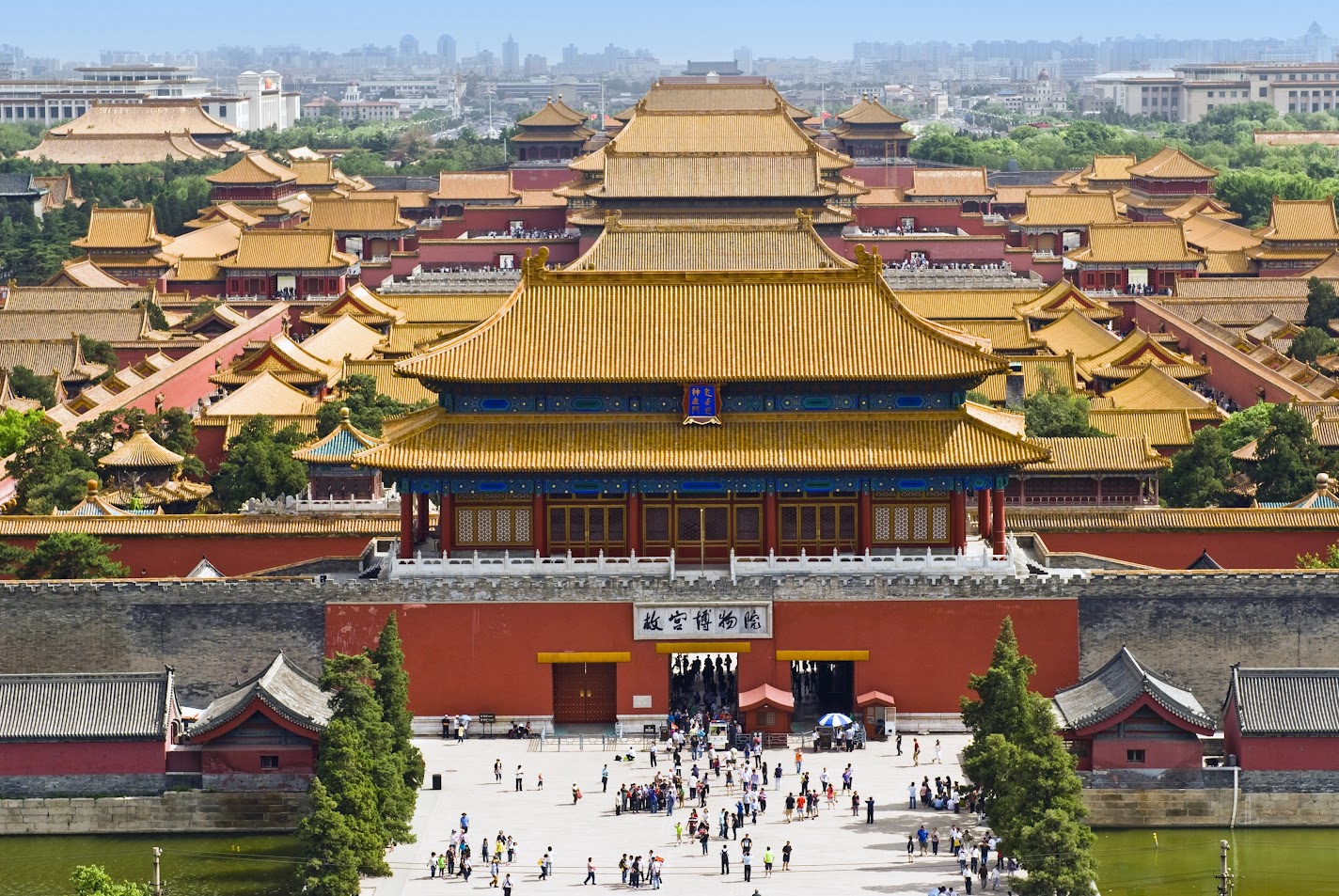
Ming And Qing Dynasty Architecture In Xinyang.
Accommodations
There are various options for accommodations in Xinyang, ranging from budget hostels to luxury hotels. Many establishments offer easy access to the main attractions, making it convenient for travelers. Booking in advance during peak seasons is recommended to secure the best rates.
Conclusion
Xinyang’s Ming and Qing Dynasty architecture is a window into China’s rich past, offering a captivating experience for travelers interested in history and culture. With careful planning, your visit can be both enjoyable and enlightening as you explore the artistry and legacy of these ancient structures. Embrace the journey, and let the stories of the past unfold before you.
Tickets: Prices, Booking, and Tips
When planning a visit to Xinyang’s magnificent Ming and Qing Dynasty architecture, it’s essential to be informed about ticket prices, booking options, and tips to enhance your experience. Here’s a comprehensive guide to help you navigate this captivating historical journey.
Ticket Prices
As of the latest information, entry to the Ming and Qing Dynasties Ancient Buildings in Xinyang is generally budget-friendly. Here are the estimated ticket prices:
- Adults: Approximately ¥30 (around $4.50 USD)
- Students and Seniors: Discounts may be available, so it’s advisable to carry student ID or proof of age.
- Children under 12: Often free or at a reduced rate.
Note: Prices may vary based on seasonal promotions or special events, so it’s best to check closer to your visit or inquire at local tourism offices.
Booking Information
- On-Site Purchase: Tickets can typically be purchased at the entrance. It’s advisable to arrive early to avoid long queues, especially on weekends or during public holidays.
- Online Booking: Some attractions may offer online booking through official tourism websites or popular travel platforms. This can be a convenient option to secure your visit and skip the lines.
Visiting Hours
The Ming and Qing Dynasties Ancient Buildings are generally open year-round, with typical operating hours as follows:
- Monday to Sunday: Open 24 hours (though guided tours may have specific timings)
Tips for Your Visit
-
Best Time to Visit: Consider visiting during the early morning or late afternoon. This allows you to enjoy cooler temperatures and softer light for photography, enhancing the beauty of the architecture.
-
Guided Tours: For a deeper understanding of the historical context and architectural significance, consider joining a guided tour. Local guides can provide valuable insights that enrich your experience.
-
Dress Comfortably: Expect to do a fair amount of walking. Wear comfortable shoes and dress appropriately for the weather.
-
Respect the Site: As with all historical sites, it’s important to respect the integrity of the architecture. Avoid climbing or touching fragile structures unless clearly permitted.
-
Explore Nearby Attractions: After admiring the ancient buildings, take the opportunity to visit other nearby sites, such as the Guide Confucius Temple and Yuhuang Pavilion. These sites offer additional layers of cultural and historical context.
-
Travel Insurance: Always a good idea when exploring new places, make sure your travel insurance covers any unforeseen events.
By understanding the ticketing process and preparing for your visit, you’ll be well-equipped to immerse yourself in the rich history and culture that Xinyang has to offer. Enjoy your exploration of the enchanting Ming and Qing Dynasty architecture!
How to Get There: A Complete Transportation Guide
Reaching the Architectural Wonders of Xinyang: Your Comprehensive Transportation Guide
Exploring the magnificent Ming and Qing Dynasty architecture in Xinyang (信阳) is a journey through time, allowing you to appreciate the rich historical and cultural tapestry of China. Here’s how to navigate your way to this captivating destination, ensuring your trip is both seamless and enjoyable.
Getting to Xinyang
- By Air
- Nearest Airport: Xinyang has a domestic airport, Xinyang Minggang Airport (XYG), which offers flights primarily from major cities like Beijing and Shanghai.
-
Alternative: For international travelers, consider flying into Zhengzhou Xinzheng International Airport (CGO) or Wuhan Tianhe International Airport (WUH). Both are well-connected to Xinyang via high-speed train or bus.
-
By Train
- High-Speed Rail: The most efficient way to travel to Xinyang is by high-speed train. Xinyang Railway Station connects you to various cities, including Zhengzhou, Nanjing, and Shanghai. Trains are frequent, comfortable, and offer a scenic view of the countryside.
-
Regular Train Services: If you’re traveling on a budget, regular train services are available, albeit with longer travel times. Ensure to check the schedules in advance as they can vary.
-
By Bus
- Intercity Buses: Numerous bus services operate between Xinyang and nearby cities. The Xinyang Long-distance Bus Station is your departure point for buses from cities like Zhengzhou and Wuhan. This method is often economical but may take longer due to traffic conditions.
- Local Transport: Within Xinyang, buses and taxis are readily available to help you reach various architectural sites.
Local Transportation in Xinyang
Once you arrive, getting around Xinyang is straightforward:
- Taxis and Ride-Hailing Services: Taxis are abundant and relatively inexpensive. Ride-hailing apps like Didi Chuxing are also widely used and can be convenient for non-Chinese speakers.
- Public Buses: An extensive bus network covers the main attractions, including the Ming and Qing Dynasty architectural sites. Check local listings for routes and schedules.
- Bicycles and Electric Scooters: For a more adventurous approach, rent a bicycle or an electric scooter to explore the city at your own pace. Several rental services are available, making it easy to navigate the historic districts.
Tips for a Smooth Journey
- Language: While major transport hubs may have English signage, it’s helpful to download a translation app or have key phrases ready, especially when dealing with local bus drivers or taxi operators.
- Cash: Although mobile payments are popular in China, having some cash on hand is advisable for smaller vendors and transportation.
- Timing: Plan your travel times wisely. The high-speed trains and buses can be busy during peak hours, especially around holidays, so consider booking tickets in advance.
Exploring the Ming and Qing Architecture
Once you arrive in Xinyang, make sure to visit the renowned sites such as the Ancient City Walls and the historic temples that reflect the architectural brilliance of the Ming and Qing Dynasties. Walking tours can provide deeper insights into the history and significance of these structures, making your visit even more enriching.
In summary, reaching Xinyang and its architectural treasures is an accessible and rewarding experience. With various transportation options at your disposal and a bit of planning, you’ll be well on your way to discovering the historical gems of the Ming and Qing Dynasties. Enjoy your journey through time!
Local Cuisine and Accommodation Nearby
Discovering Culinary Delights and Comfortable Stays in Xinyang
As you explore the rich architecture of the Ming and Qing Dynasties in Xinyang, you will also find a delightful array of local cuisine and accommodations that enhance your travel experience. Here’s a curated selection of eateries and places to stay, ideally suited for international travelers eager to immerse themselves in Chinese history and culture.
Local Cuisine to Savor
-
Xinyang Maojian Tea
This region is renowned for its green tea, particularly Xinyang Maojian. A visit to a local tea house not only gives you a taste of this aromatic brew but also a glimpse into the traditional tea culture of China. Be sure to try it with local snacks, such as tea-flavored pastries. -
Jianghuai Cuisine
Indulge in the distinct flavors of Jianghuai cuisine, characterized by its use of fresh ingredients and balanced tastes. Popular dishes include: - Stewed Fish with Pickled Vegetables: A local favorite, this dish combines fresh river fish with tangy pickled veggies for a refreshing meal.
-
Xinyang Braised Pork: Tender, slow-cooked pork belly seasoned with local spices, served with steamed buns.
-
Street Food Delights
Don’t miss the bustling street food scene, where you can taste local snacks such as: - Scallion Pancakes: Crispy on the outside and soft on the inside, these savory pancakes are a must-try.
- Sticky Rice Dumplings: Filled with various ingredients, these dumplings are perfect for a quick, satisfying bite.
Where to Stay
-
Xinyang International Hotel
Located conveniently near the ancient buildings, this hotel offers a blend of comfort and modern amenities. Guests rave about the spacious rooms and attentive service. It’s an ideal base for exploring the nearby cultural sites. -
Hanting Express Hotel
For budget-conscious travelers, Hanting Express provides clean and comfortable accommodations. It’s strategically located with easy access to major attractions, making it perfect for those looking to explore without breaking the bank. -
Local Guesthouses
Experience authentic hospitality by staying in one of the local guesthouses. Many feature traditional architecture and offer home-cooked meals, allowing you to immerse yourself in the local lifestyle. Ask your host for recommendations on nearby attractions and dining options.
Wrap-Up
When visiting Xinyang’s Ming and Qing Dynasty architecture, take time to indulge in the local flavors and enjoy the comforts of the area’s accommodations. Whether you’re sipping a cup of Xinyang Maojian tea or savoring a plate of braised pork, these culinary experiences will enrich your journey through this historically significant region. Enjoy your exploration!
Frequently Asked Questions
Frequently Asked Questions about Ming and Qing Dynasty Architecture in Xinyang
1. What are the key features of Ming and Qing dynasty architecture?
Ming and Qing dynasty architecture is characterized by its intricate wooden structures, decorative beams, and vibrant colors. Key features include sweeping roofs with upturned eaves, elaborate carvings, and the use of symmetrical layouts that reflect Confucian ideals. Buildings often incorporate elements such as courtyards and gardens, creating harmonious relationships between nature and architecture.
2. Where can I find the best examples of Ming and Qing architecture in Xinyang?
In Xinyang, you can explore several notable sites, including ancient temples, government buildings, and residential homes that date back to the Ming and Qing dynasties. The Guide Confucius Temple and Yuhuang Pavilion are particularly outstanding examples, showcasing the architectural elegance of the time. Additionally, wandering through the old city walls offers a glimpse into the historical urban layout.
3. How accessible are these historical sites for tourists?
Most historical sites, including the Ming and Qing dynasty buildings, are accessible to tourists. Many locations have been maintained for public viewing, though some may require a bit of walking or climbing. Ensure to wear comfortable shoes, and be prepared for uneven surfaces in areas still in their natural state.
4. Are there guided tours available for exploring these architectural sites?
Yes, guided tours are available that provide in-depth knowledge about the history and architectural styles of the Ming and Qing dynasties. These tours often include visits to multiple sites, enhancing your understanding of the cultural significance behind the structures. Check local tourism offices or online platforms for availability and booking options.
5. What is the best time of year to visit Xinyang for architectural sightseeing?
The best time to visit Xinyang is during the spring (April to June) and autumn (September to November) seasons. During these months, the weather is typically mild and pleasant, making it ideal for walking tours and outdoor exploration of the historical sites.
6. Are there any restrictions or guidelines for visitors at these sites?
Visitors are generally expected to respect the historical integrity of the sites. This includes refraining from climbing on structures unless permitted and avoiding loud noise. Photography is usually allowed, but be sure to check for any specific restrictions at individual locations.
7. Can I combine my visit to Xinyang’s architectural sites with other attractions?
Absolutely! Xinyang is home to beautiful natural scenery and cultural experiences. After exploring the Ming and Qing architecture, consider visiting nearby attractions such as the Yellow River or participating in local cultural events. The area is renowned for its stunning landscapes, making it easy to create a well-rounded itinerary.
8. How can I learn more about the history of Ming and Qing architecture before my visit?
To deepen your understanding, consider reading books or articles focused on Chinese architectural history, specifically those covering the Ming and Qing dynasties. Documentaries and online resources, including virtual tours and lectures, can also provide valuable insights. Engaging with local historians or guides during your visit can further enrich your experience.
Final Thoughts on Your Trip
As your journey through the remarkable world of Ming and Qing Dynasty architecture in Xinyang comes to an end, take a moment to reflect on the rich tapestry of history and culture you have encountered. This region, marked by its ancient structures and the stories they tell, offers a unique glimpse into the past that few places can rival.
Embrace the Heritage
-
Architectural Wonders: The intricate designs and grand scale of the buildings you’ve explored are not merely relics; they are testaments to an era defined by artistry, philosophy, and governance. From the weathered walls of ancient temples to the serene ambiance of traditional pavilions, each site holds a narrative waiting to be discovered.
-
Cultural Insights: Your visit has been a journey beyond mere sightseeing. Engaging with local traditions, tasting authentic regional cuisine, and conversing with residents enriches your understanding of the Ming and Qing Dynasties’ enduring influence on modern Chinese culture.
-
Natural Beauty: Don’t forget the stunning landscapes that frame these historical sites. The tranquil paths along the Yellow River and the scenic vistas surrounding Xinyang enhance the experience, reminding you that nature and history are intertwined here.
A Journey Worth Taking
As you prepare to leave Xinyang, carry with you not just memories of beautiful buildings but also an appreciation for the resilience and creativity of those who came before us. Whether you’re an avid historian or simply a curious traveler, the insights gained from this trip will resonate long after you’ve returned home.
Share Your Experience
Consider sharing your journey with others. Your stories and photographs can inspire fellow travelers to embark on their own adventures into the depths of Chinese history. As you recount your experiences, you become a bridge connecting others to this fascinating world.
In closing, remember that the spirit of the Ming and Qing Dynasties lives on not just in the bricks and mortar of these ancient buildings, but in the heart of every person you meet and every story you hear. Safe travels, and may your wanderlust continue to guide you to new horizons!